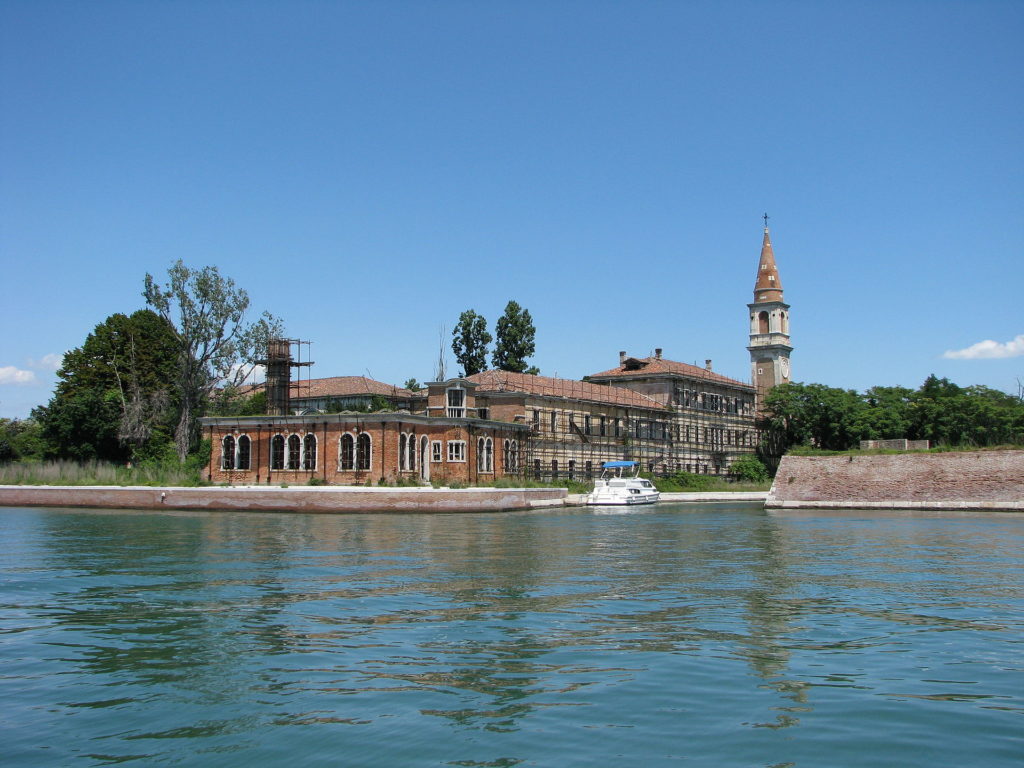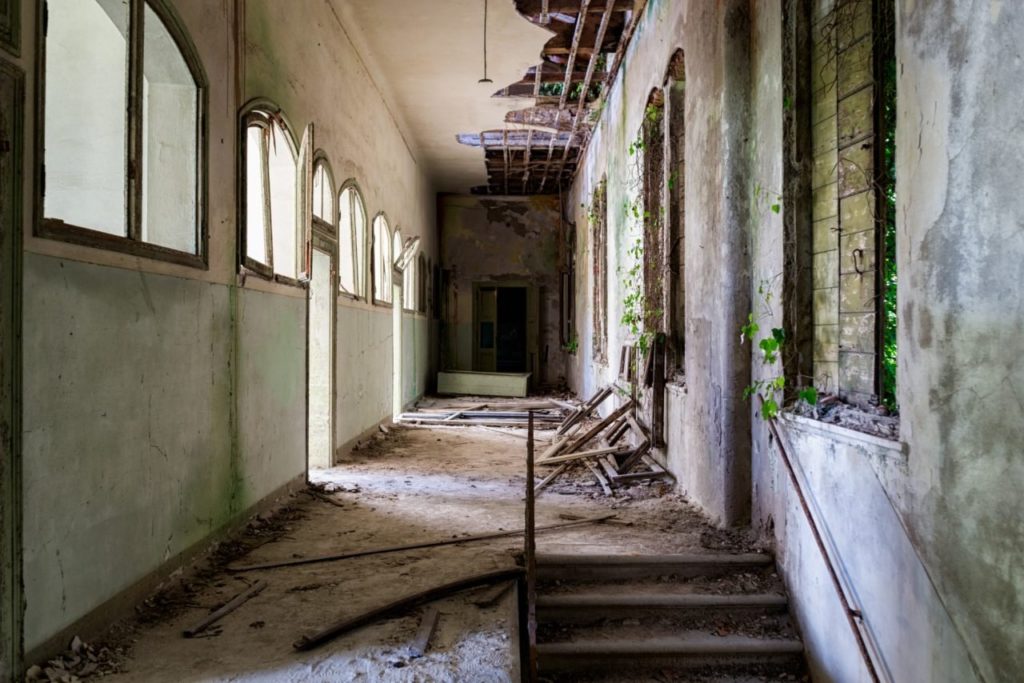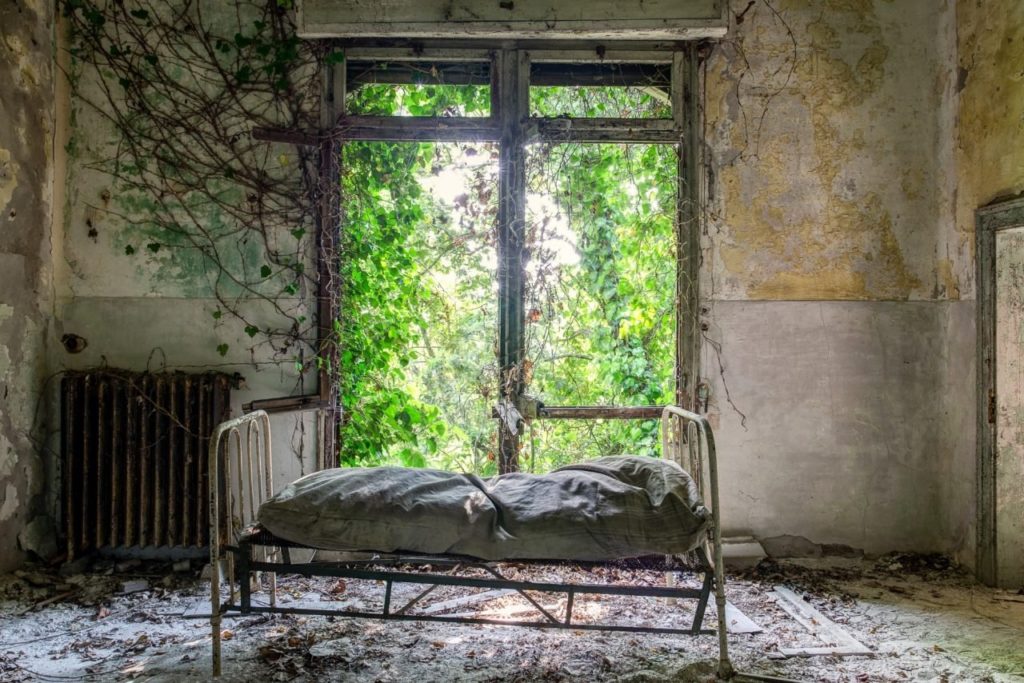Last updated on January 26th, 2023 at 01:11 am
Isolated in the Venetian Lagoon, Poveglia Island is a place that has long been shrouded in mystery. Geographically, it’s just a few miles from Venice, Italy.
The island has a long and dark history, dating back to the Roman Empire. Over the years, it has served many purposes, but ultimately it ended up abandoned and off-limits to tourists.
In this post, we will explore the history of Poveglia Island and what makes it so notable.

The Earliest Recorded History Of Poveglia Island
Poveglia Island has a long and varied history, dating back to the Roman Empire. It’s unclear why many tourists wish to visit this place, but to this day, it attracts anyone interested in Poveglia’s dark past.
In the early fifth century, the island was used as a refuge for the Italian citizens while the city was attacked by Alaric the Goth and Attila the Hun.
However, historians speculate that inhabitants known as the Euganei may have used the island around 2,000 BC. The island’s location in the lagoon about the other islands makes it easier to defend, and the residents lived peacefully until the 14th century BC.

Fast forward to 1379, as Venice became a significant power, they needed a secure location to combat enemy ships that tried to invade Venice.
During the Chioggia War with Genoa, the government forced the current residents of Poveglia Island to move to a different island within the lagoon.
Once the residents were gone, officials built an octagon fort complete with naval artillery, which allowed Venice to control the lagoon from its defensible position.
Afterward, the island was vacant for approximately two hundred years, but this is where the island’s genuinely gruesome history begins.
The Island Becomes a Plague Colony
In the 14th century, when the Bubonic Plague began to decimate Europe, Poveglia Island became a plague colony. What was meant as a temporary solution to the overwhelming number of infected populace later became a permanent solution.
The plague swept through Venice a few times, but after the first occurrence in 1348, the city knew more about how the sickness spread and acted accordingly.

At that time, half the population succumbed to the disease, and the survivors more or less learned how the disease spread. When the second wave of the plague ravaged the country again, it took Venice’s current ruler with it.
At first, they dumped the infected corpses into two separate burial sites outside the city limits. However, the Venetians had to take more drastic measures when the massive pits overflowed with the dead.
The government then exiled all infected people to Poveglia Island and the smaller islands, creating the Lazaretto.
While not officially associated with Poveglia, Lazzaretto Vecchio was another smaller island and the location of the first lazaretto.
Conditions were so desolate in this lazaretto that a chronicler from the 16th century named Rocco Benedetti mentions that at least 500 people a day died at Lazzaretto Vecchio, and it reminded him of hell.
The Venetian government decided to use Poveglia as a dumping ground for the city’s infected citizens. During this time, officials sent large barges of dead victims to Poveglia to dump.
At the same time, government officials also sent anyone suspected of having plague symptoms to the island.
Unfortunately, officials left over 100,000 to 160,000 people on the island, making it a lonely and terrifying place. The conditions on the island were unsanitary, and the plague victims were left to die.
The island soon became known as the “Island of Death.”
Poveglia Becomes A Checkpoint
Generally, the infected population would have to wait 40 days to die or recover, but the latter rarely happened. If citizens stole or committed other crimes, the government would send them to Poveglia Island to live out the rest of their days.
There were so many dead, dying, and sick people on the island that it became challenging to bury them all. History says workers spent entire days carrying and tossing bodies into piles at Poveglia with no breaks.
At this point, the Venetians were forced to start burning the bodies to prevent the plague from spreading and to make room for more victims.
Due to the nature of the disease, those who were too sick to speak were often mistaken for dead and burned alive. Ash rained down from the sky, and smoke from the burning bodies choked and polluted the air.
The consistent burning of plague victims and the sheer number of infected people sparked a rumor among future generations of Venetians. According to the story, the soil on Poveglia Island is 50% human ash due to the constant burning of bodies.
Whether this is 100% untrue, it is still a terrifying thought. An archaeological excavation would later reveal the skeletal remains of 1,500 victims who died from the plague.
Scientists believe the lazaretto held more remains than they found at the time. To this day, human charred human bones still wash up on Poveglia’s shores.
Not surprisingly, fishermen steer clear of Poveglia out of fear of pulling up human bones in their nets.
The plague came through again around 1777 and decimated the population once more. This time, Poveglia was the sole location of a checkpoint for ships that would pass through Venice on business.
The Magistrate of Health decided that anyone who showed any plague symptoms would be quarantined on Poveglia Island. Venice was a trade hub and was subject to countless diseases during this time.
Thus, any ship heading to Venice had to endure rigorous inspections, which often caused delays and disputes. In 1790, two boats failed to pass the examinations, and thus Poveglia became known as the “Island of Death” for a second time.
Under the rule of Napoleon, the island was permanently used for isolation colony purposes until the hospital closed in 1814.
Poveglia Is Abandoned
The Venetians abandoned the island in 1868 after the Venetian authorities decided it was no longer necessary to have a quarantine station.
The Venetians also agreed that they would no longer have to deal with the smell of burning bodies and the plague victims. The island was essentially abandoned, left to rot and decay.
The Island’s Darkest Days: Poveglia Becomes a Mental Hospital
The island’s dark past has made it one of the most haunted places in the world. Many legends and stories of ghosts haunt the island. It is widely believed that the spirits of the plague victims and the exiled criminals to the island still linger there today.
Although its history is dark and terrifying up to the early 19th century, it seems that Poveglia’s history could grow darker still.
In 1922, a mental hospital was built on Poveglia Island, and it soon became known for its inhumane treatment. The government repurposed the buildings for mentally ill patients. Multiple sources state that the hospital was supervised by a man named Dr. Paolo.
At the time, mental illness wasn’t as clearly defined as it is today. Hence, the hospital was home to many patients with physical disabilities, mental conditions, and neurological problems.
In addition, since mental illness wasn’t clearly defined, anyone who behaved outside of the cultural norms often was associated with mental illness and forced to go to the island.
With these patients out of sight and out of mind, Poveglia soon became a nightmarish place.
Unfortunately, this doctor was known for performing barbaric and torturous treatments on his patients, such as electric shocks, lobotomies, and force-feeding. Dr. Paolo performed these procedures using hammers, chisels, and drills without caring for anesthesia or cleanliness.
Like before, being sent to Poveglia was a death sentence, and there was no chance for rehabilitation of the doctor’s patients. Patients were often chained to their beds or left in dark rooms for days.
Many patients died under Dr. Paolo’s care, and their bodies were buried in unmarked graves on the island. Reports indicate that Dr. Paolo would later be discovered dead near the bell tower located on the island.
In 1968, the hospital closed and was abandoned again, and soon, the buildings were left to decay and fall apart.
The Island Is Sold to Private Owners
Regardless of Poveglia’s dark history, the government has tried to find buyers for the island over the years. In 2014, the Venetians sold the island to a private owner with redevelopment plans.
The sale of the island has caused a lot of concern among the public, as they are worried that the new owner will exploit the island’s dark past and turn it into a tourist attraction.
Poveglia’s Reputation Has Turned It Into A Hub Of Paranormal Activity
In recent years, Poveglia Island has developed a name for itself as one of the most haunted places in the world. It’s a place that is shrouded in mystery and terror.
Visitors and thrill seekers often visit the island, hoping to catch a glimpse of one of the ghosts that are said to haunt it. Many stories and legends of hauntings on the island and the spirits of the plague victims exiled to the island still linger there today.
Poveglia has often been the subject of television programs, highlighting the potential for paranormal activity on the island. The island has even become the subject of TV shows like Ghost Adventures and Scariest Places On Earth.
Despite the sinister reputation of the island, it still manages to draw thrill-seekers from all over the world. For instance, in 2016, some American tourists were caught trying to sneak onto the island in the middle of the night.
Firefighters were sent to the island to rescue them when a passing boat could hear their screams. So, it’s easy to see why Poveglia has developed its particular reputation.
And with the island’s terrifying history, it’s no wonder it’s illegal to visit Poveglia Island without special permission from the government. So, until Poveglia is suitable for something else, it will be a dark and haunted place.

